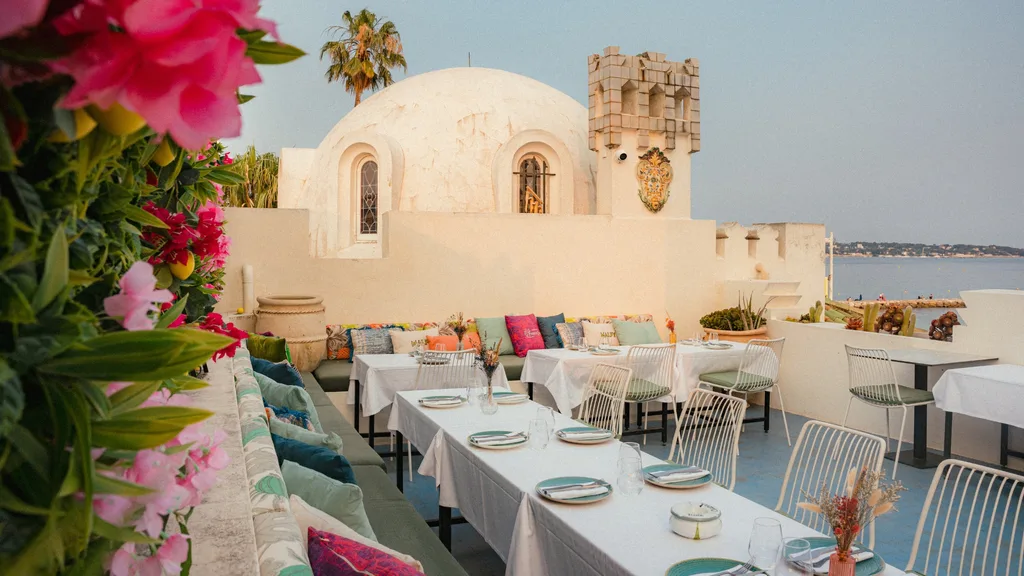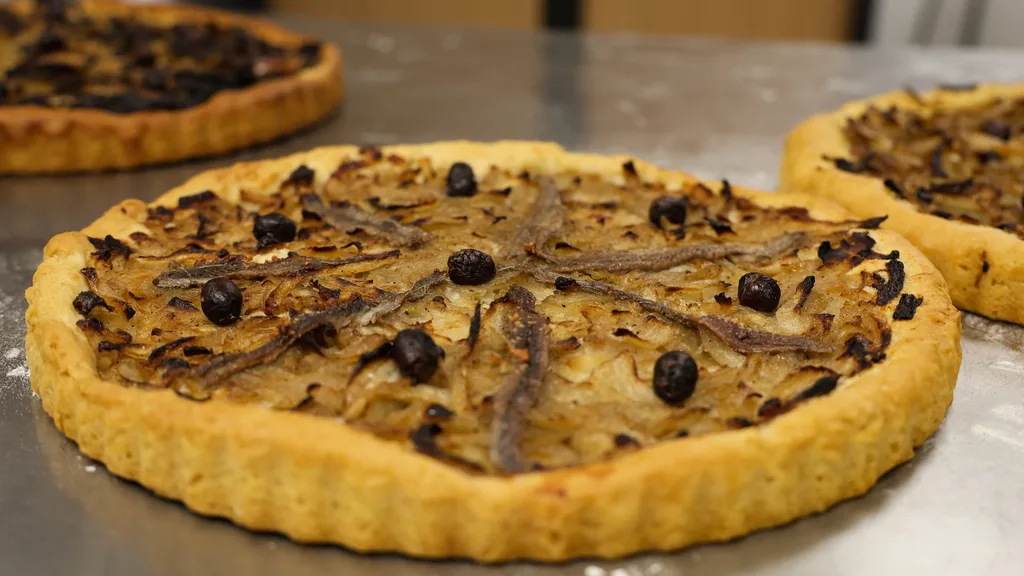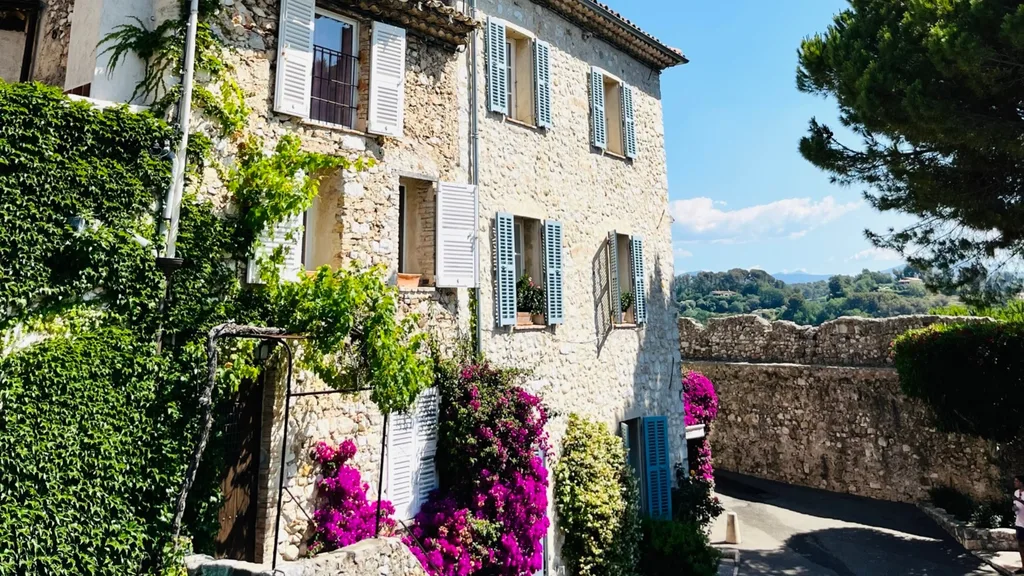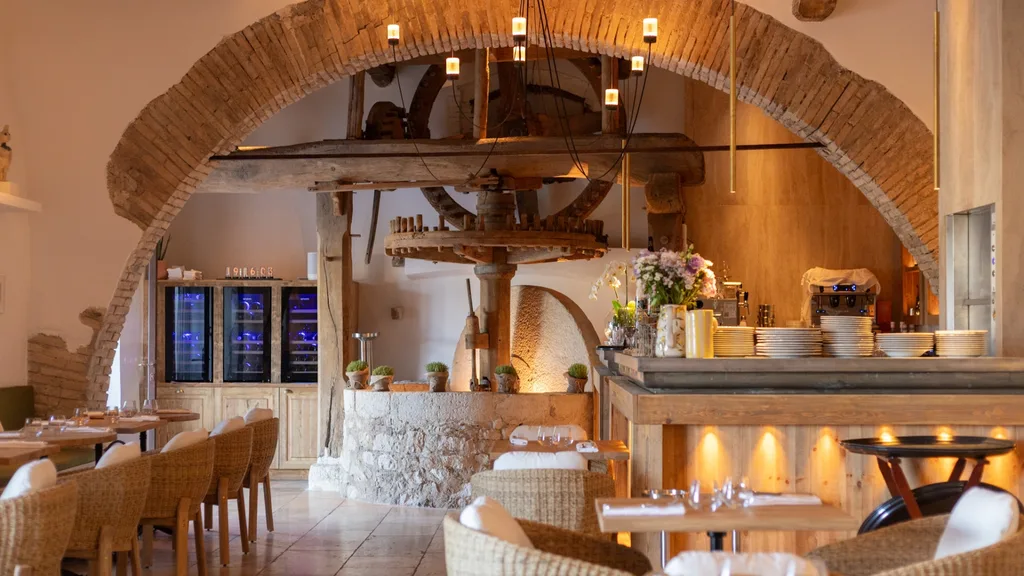When I lived on the Côte d’Azur, my go-to treat was a plain crêpe. No sugar. No lemon. Definitely none with fresh strawberries and Nutella, hot and dripping from the edges.
I wasn’t born with boring tastebuds. The reality was that I was 18 and living as an au pair on 70 euros a week, which didn’t quite allow me to immerse myself in Nice’s impressive eating culture. I never bought the chilled Provençal rosé in the beach clubs of Cannes. Instead of lingering over long lunches in vineyards, the one-euro espresso and a croissant did me just fine.
But now I was back: sipping Sanpellegrino under the blue-and-white umbrellas on the beach, steps from the Art Deco hotels of the Promenade des Anglais that I never dreamt of entering as a teenager. And this time, I wasn’t going to waste my second chance to eat like a local.
To do that properly, I needed to understand where I really was. The Côte d’Azur is far bigger than people realise, stretching from the citrus trees of Menton, along the neoclassical streets of Nice, and beyond the beaches of St-Tropez. It’s impossible to define a single culinary identity across that space – despite the stereotype of summertime superyachts, spooning caviar and sipping Champagne. Beneath the spectacle lies something quieter. A rhythm the whole Côte shares, of unhurried meals, easy-sipping cocktails, and cooking made to be shared, not shown off.
Perhaps the best place to begin was with the image that clings hardest to the myth: the beach club. I’m in Juan-les-Pins, staying at Villa Miraé – a Mediterranean-influenced boutique hotel with a restaurant by Michelin-starred chef Mauro Colagreco, in the Cap d’Antibes. It’s here that they still shape what Côte d’Azur leisure means.
As a teenager, I imagined it was all about the ultra-rich offering each other cold stares. But for residents here, a Côte venue on the shore can be familiar and easygoing. A place that’s all about meeting friends, not impressing strangers.
“We really gravitate towards places where we can just chill out and not be in a rush,” explains Catherine St John, general manager at Villa Djunah in Juan-les-Pins.
 Alfresco dining at Villa Djunah’s rooftop.
Alfresco dining at Villa Djunah’s rooftop.
She describes a relaxed ritual of sharing, with food as a centrepiece of social life, family and community: the joie de vivre at her summer-only club. Sitting on a wooden deck, surrounded by ferns and soft house music, a half-bottle of AOC Côtes de Provence rests between us, and we’ve just finished snacking on crudités and tzatziki. Now, thick-cut tuna brochettes arrive, glistening with lemon, alongside a charred octopus leg on chickpea purée. Other guests lounge beneath cream tasselled umbrellas or paddle in the green-blue-clear sea. It’s stylish – yes, but a world away from the Côte d’Azur’s impossibly exclusive image. And granted, that world still exists, complete with the jazz festivals, yachts and plages privées. But here, they’re just the garnish at the edge of the table.
Half an hour east, another dining mythology emerges. Rather than in Michelin restaurants or beach clubs, it’s in the home kitchens and unassuming bistros of Nice, the unofficial capital of the Côte d’Azur. Today, the city is known for well-to-do tourism, but that wasn’t always the case. Historically, it was a town that experienced more than its fair share of poverty.
“The Niçois were probably the poorest in the kingdom,” says Christine Gilli, a straight-talking chef whose family has lived in Nice – then called Nizza – for more than 300 years. “We had nothing.”
But, Gilli tells me, Nice has “a very clever cuisine” born of this scarcity. She taps her fingers emphatically on the table as she lists the staples: artichokes, potatoes, chard. It was with these and other ingredients that generations of Niçois made a hundred dishes, a hundred ways. I imagine in winter, they might become lu gnoc de tantifla nissart (chard gnocchi in the Nissart dialect).
The passionate chef now teaches these recipes as manager at L’Atelier Cuisine Niçoise, where visitors like me learn to make stuffed farcis, deep-fried zucchini flower beignets, and onion and anchovy-smeared pissaladière. All dishes that feel like a continuation of her family’s frugal traditions, which I eat as she continues to tell me about them.
 Pissaladière at L’Atelier Cuisine Niçoise. (Credit: OTMNCA)
Pissaladière at L’Atelier Cuisine Niçoise. (Credit: OTMNCA)
While Gilli calls it “a true Mediterranean cuisine,” built on vegetables, fruit and olive oil rather than Parisian butter and cream, it’s also remarkably adaptive. Over 250 years, it’s adjusted itself to the demands of wealthy visitors, from Russian aristocrats to Queen Victoria, who wanted everything from rich meats to fine wines.
That spirit of ingenuity survives today. The Cuisine Nissarde label is part of France’s intangible cultural heritage and is awarded to restaurants that follow traditional methods. You can use it as you steer to experience the “real” food of Nice. Find it at La Table Alziari, where I devoured bowls of l’estocaficada, a garlicky tomato-and-cod stew, and the region’s small, sharp olives. Listen for the bell of the pushcart at Chez Thérésa‘s market stand for wood-fired socca (chickpea pancakes) and savoury tourte aux blettes. Or stop in at Cave Bianchi, where you’ll be offered a glass of Bellet, a uniquely Niçois wine, grown within the city limits.
For a city on the ocean, though, there’s surprisingly little fish on the plate. Gilli’s theory is that, thanks to a jagged coastline that plunges into canyon-like depths, the people here don’t necessarily have a fond relationship with the sea. So, to understand the Riviera’s cuisine fully, you have to leave the sea behind and follow the trail inland.
Before Nice was even Nizza, before the battlements of medieval border strongholds were raised, people were already living off this land. Driving into the hills, I imagine the same dry-stone terraces being worked for centuries, farmhands pressing harvested tomatoes into yesterday’s bread in a precursor to the region’s famous lou pan bagnat.
I’m headed for the town of Saint-Paul-de-Vence. Like Cannes or St-Tropez, this hilltop town hasn’t escaped the golden touch of fame. At La Colombe d’Or inn, Matisse, Braque and Chagall were frequent visitors, and their works can still be found here.
 Saint-Paul-de-Vence (Credit: Emilie Coulombeau)
Saint-Paul-de-Vence (Credit: Emilie Coulombeau)
That’s not my stop today, though. Just outside the town walls, I arrive at an old watermill. Once the domain of farmers, it’s now home to Le Moulin de Saint-Paul, an understated new restaurant with a quiet Michelin connection, accessible prices, and a reverence for local ingredients.
Its owner, Alain Llorca, runs a nearby Michelin-starred fine-dining restaurant, but here, he imagined something else. A democratic eatery of today that blends the foundations of the arrière-pays (hinterland) with the Riviera’s love of celebration. It’s reinvention with deep roots. And it shows. I can barely stand after a tart of local tomatoes with burrata and truffle, an Alpes-Maritimes riff on steak tartare, threaded with veins of citrus and herbs, and a wedge of sweet tourte aux blettes sucrée, made of chard (a true recurring star), folded with butter, sugar, parmesan and fruit into a crumbly slice.
It’s my final meal before I leave once again. As the night train pulls away back to Paris and the coast speeds past, I lie back on my bed, tired and finally satisfied that I understand the true taste of the Côte.
Where to eat, shop and stay in Côte d’Azur
Best Côte d’Azur accommodation
 Villa Miraé by Inwood Hotels
Villa Miraé by Inwood Hotels
Villa Miraé by Inwood Hotels, Cap d’Antibes: Luxury boutique hotel, a garden staircase away from the beach.
Hôtel du Couvent, Nice: Newly opened hotel in an abandoned 17th-century convent, with sprawling kitchen gardens, apéro courtyard among the cloisters and onsite apothecary.
La Colombe d’Or, Saint-Paul-de-Vence: Iconic hilltop hotel and restaurant with a private modern art collection and historic guest list.
Best Côte d’Azur restaurants and bars
 Le Moulin de Saint-Paul’s
Le Moulin de Saint-Paul’s
dining room.
Villa Djunah, Juan-les-Pins: Beachfront restaurant and club offering Mediterranean sharing plates, cocktails, and DJ sets after sundown.
Chez Thérésa, Nice: Longstanding socca stall in Cours Saleya market; chickpea pancakes arrive by pushcart from a nearby wood-fire oven.
La Table Alziari, Nice: A traditional Niçois bistro complete with Cuisine Nissarde certification.
Cave Bianchi 1860 – Musée du Vin, Nice: Underground wine cellar and local pourings in Old Town.
L’Atelier Cuisine Niçoise, Nice: Cooking school with hands-on classes in traditional recipes.
Best shops and markets in Côte d’Azur
Marché Provençal, Antibes: Covered market in the Old Town selling fresh produce, cheese, flowers, and oils. Don’t miss L’Absinthe Bar and Shop next door.
Cours Saleya market, Nice: Open-air food and flower market near the seafront in the Old Town.
Le Clos de Laure, Nice: Small gourmet grocer selling everything from glass-blown jam spoons to syrups made from the roses of Grasse.
Trésors Publics, Nice: Highly curated gift shop of French-made household items, vintage-style souvenirs and artisan goods.
The writer was supported by Côte d’Azur France Tourisme, Office de Tourisme et des Congrès d’Antibes Juan-les-Pins, Office de Tourisme Métropolitan Nice Côte d’Azur, and Rail Europe.
Author
Kate Bettes
Journalist
Magazine Issue:
October 2025
Sign up for our newsletter
Sign up to receive the Gourmet Traveller newsletter and offers we choose to share with you straight to your inbox
By joining, you agree to our Privacy Policy & Terms of Use
About your privacy Are Media Pty Limited collects your personal information through this site to process registrations, send out newsletters, communicate offers, discounts, competitions, or surveys, and to provide you with targeted advertising based on your online activities. Our Privacy Policy contains information on how you can access or correct your personal information, which entities we may disclose your personal information to (including overseas recipients), how to opt out of targeted advertising, and how to lodge a complaint.


Dining and Cooking